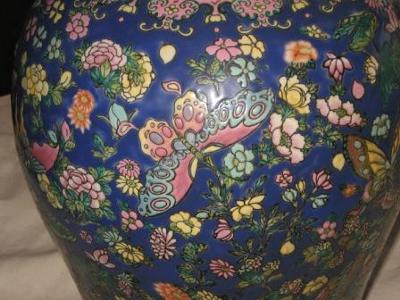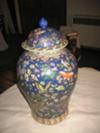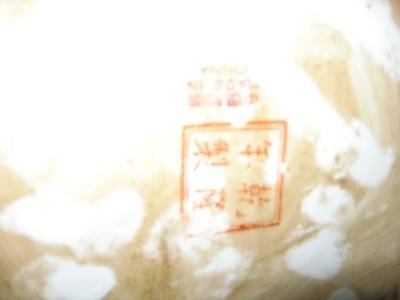Commenting is deactivated.
Please post all new topics and queries to the
Discussion Forum
Temple Jar photos
by Alex
(Lansing, Iowa)
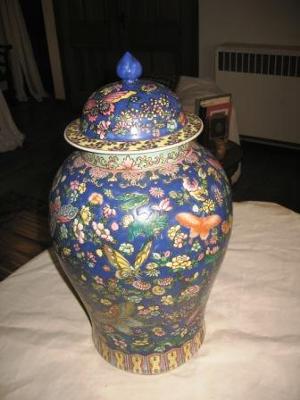
Unfortunately my two photos didn't make to the original text posting. I have compressed them and will try again. I couldn't figure out how to edit my posting by adding the photos later. Perhaps you could connect them. Thanks.
Click here to read or post comments
Return to Ask a Question or Contribute - archived 2013.
Temple Jar
by Alex
(Lansing, Iowa, USA)
Hello, Peter (and interested others.)
Your comments regarding my temple jar will be greatly appreciated.
It is 20 inches tall, heavy and thickly potted. The bottom marks are the stamp of the Quianlong reign and Made in China. It was purchased from an antique dealer in the 1970's who said it dated from the early 20th century and had been acquired from a temple. I am especially interested in finding out about the potting technique used. I have not sen it before. Rather than being smooth, the surface is irregular to the touch. The extensive black outlining of petals, butterfly designs, etc. is ever so lightly recessed - as if it were incised; whereas, the outlined parts have a very slightly protruding roundness to them. I have read that there was a revival of old styles and techniques during the Early Republic and am wondering if this might be an example of such.
Thank you for your site and attention.
-- Need pictures if we are to help--
Return to Ask a Question or Contribute - archived 2013.
Temple Jar markings from Alex, Lansing, Iowa.
by Alex
(Lansing, Iowa)
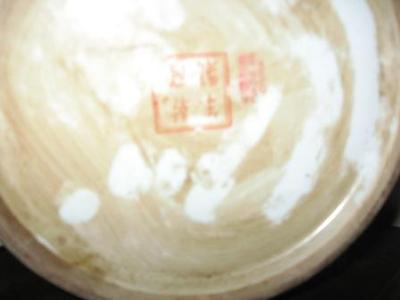
Peter, Thanks so much for your insight. The bottom marks of the Made in China and the Chianlong reign led me to believe it could be possibly from fairly early in the century when the change was made to the Made in China requirement. I had read that the old technique called fa hua was revived at the end of the Qing dynasty and thought it might be an example, because it bears similarities - being very thickly potted with the incising and and black outlining of each shape and the slight protrusion of the colors within the outlines. The porcelain I have encountered thus far has always been smooth to the touch. Are such pieces, where one can feel can feel each design element with the fingertip, commonplace? Thanking you in advance for your further comments.
PS: Attached are two photos of the markings. Pardon the lack of quality. Still don't know this camera very well.
